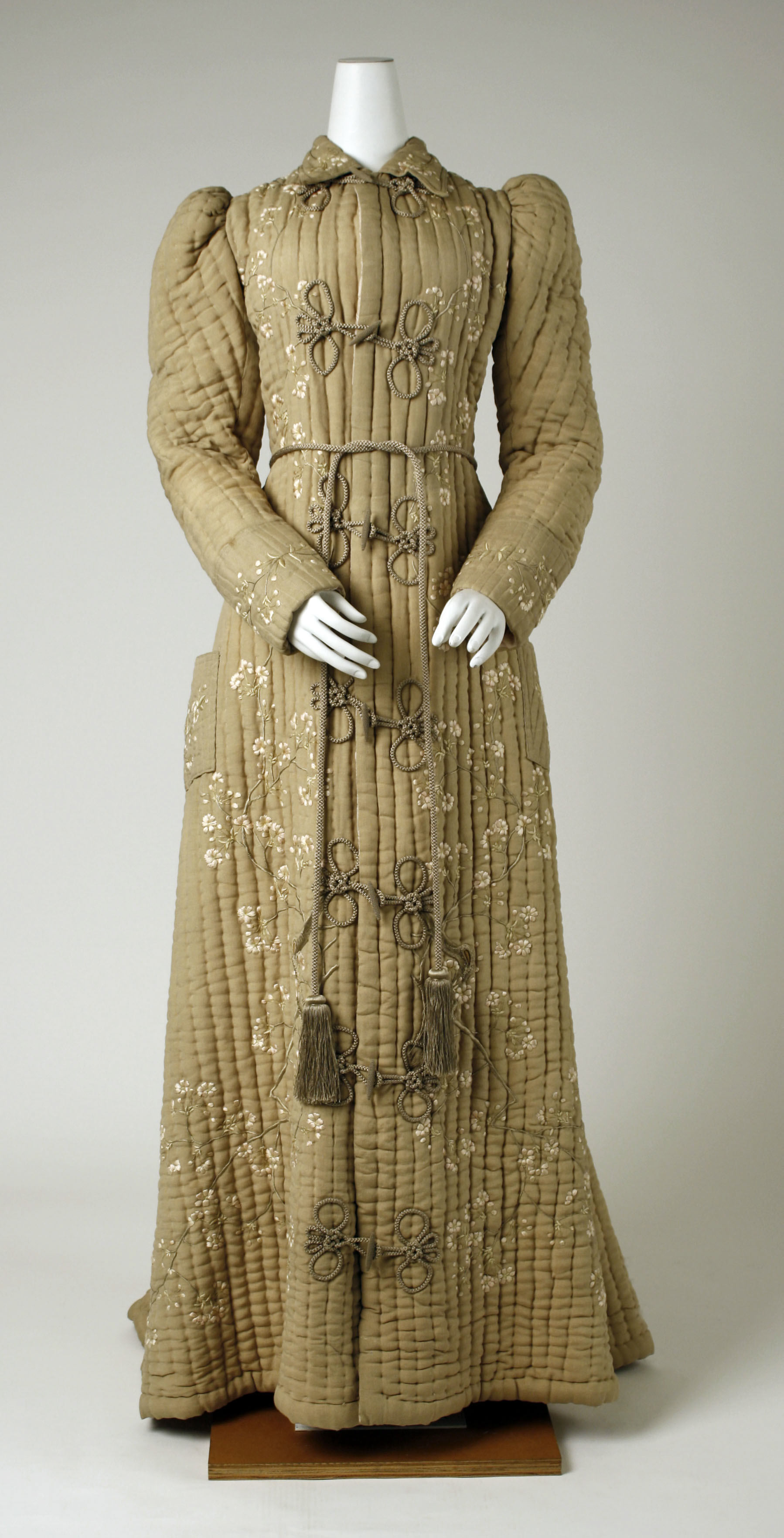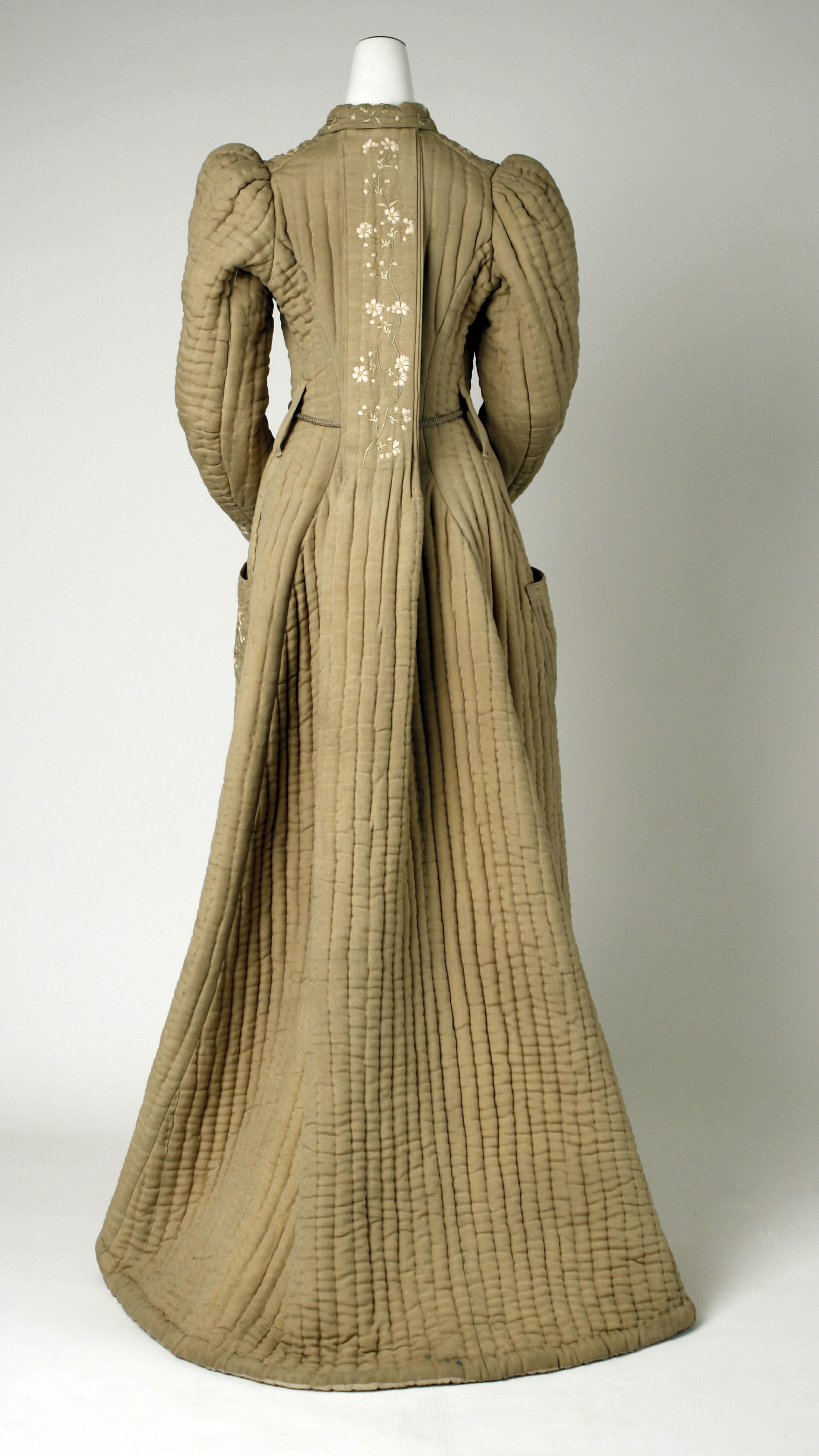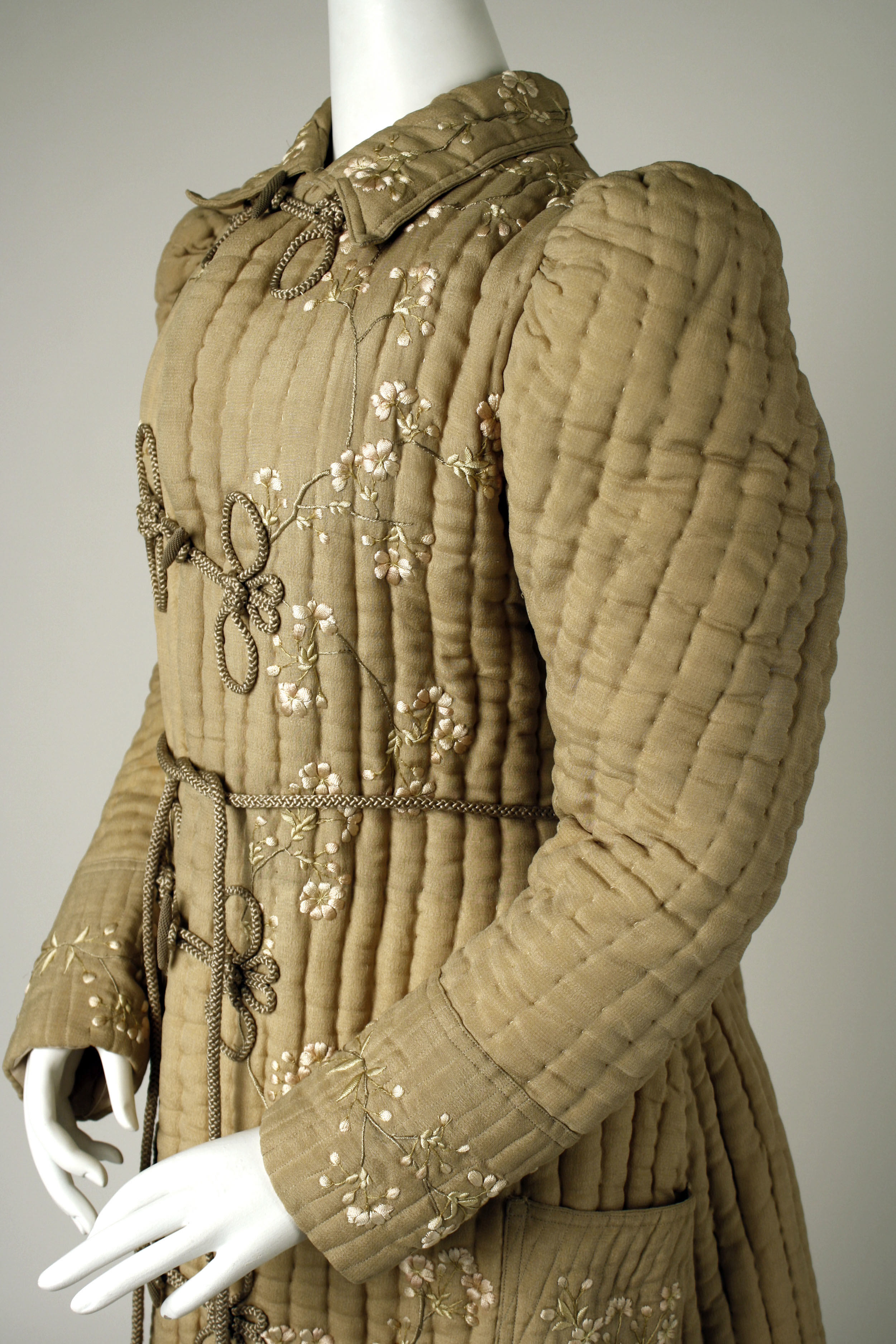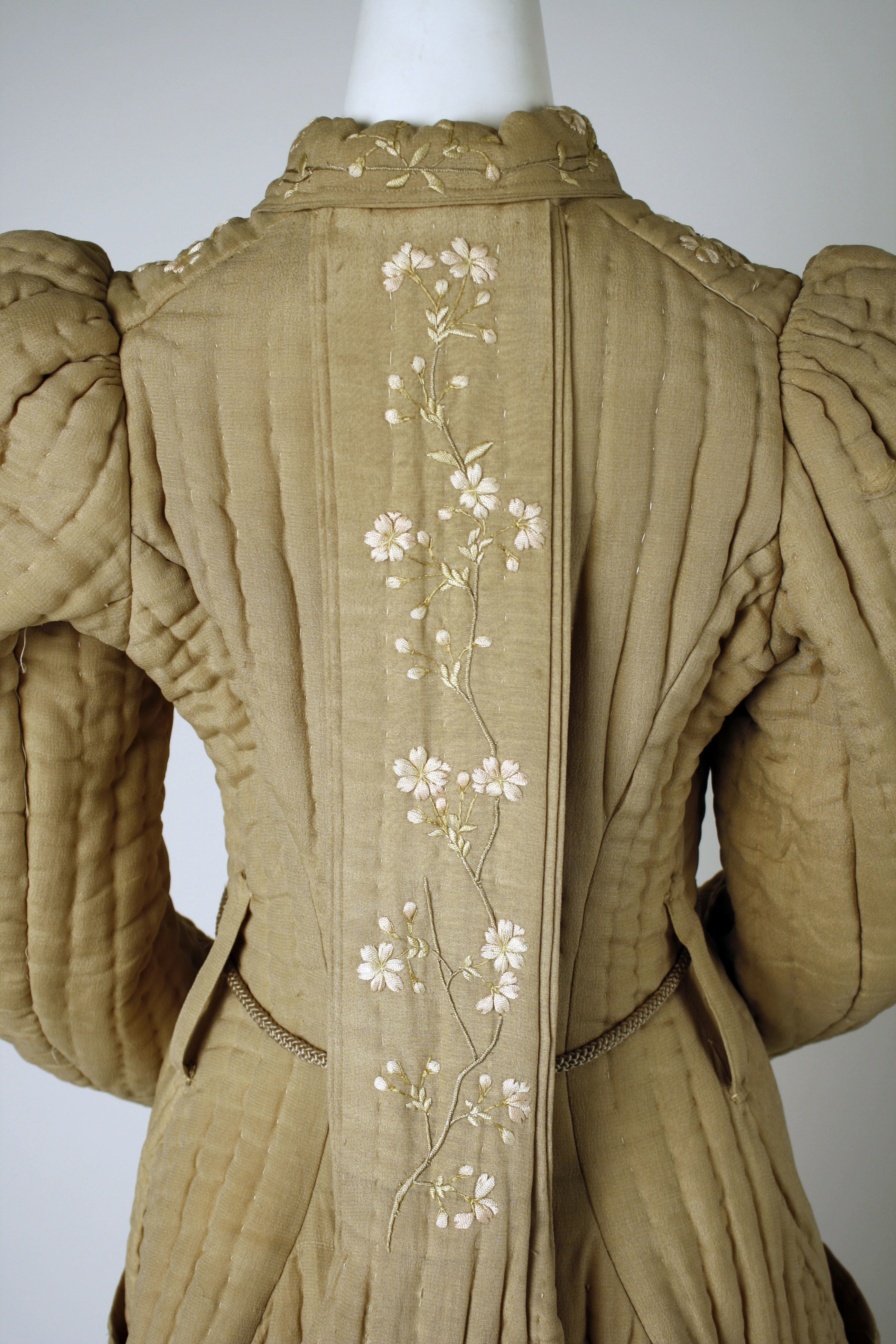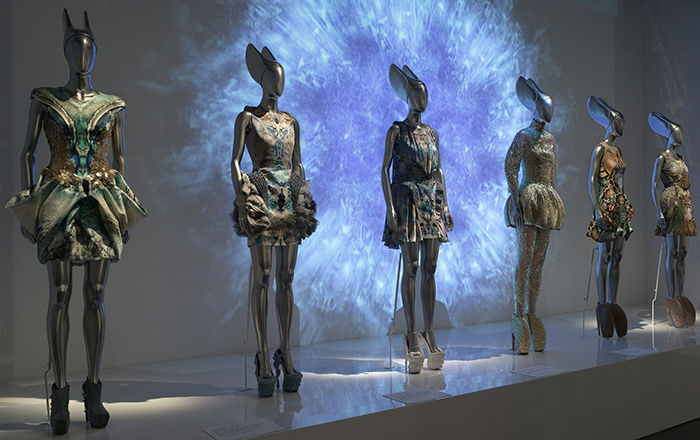Dressing gown
Not on view
Yokohama opened as a treaty port in 1859, and trade with Western countries developed rapidly. In 1873, Japan exhibited decorative arts, textiles, ceramics, and lacquerware at the Vienna World’s Fair, popularizing Japanese art in Europe. Spurred by Western demand, Japanese textile businesses started to produce dressing gowns for the foreign market. The so-called Yokohama robe, named for the port from which the garments shipped in the 1880s and 1890s, was developed based on models provided by Western retailers. In the 1910s, Yokohama robes were advertised in American Vogue and Vanity Fair. Western in shape, as is this example with leg-of-mutton sleeves and a pleated backside in the French style, these gowns were made of quilted habutai (a plain-weave, glossy silk) and embroidered with traditional Japanese motifs like spring flowers. They would not have been worn by Japanese women and instead represent a hybrid style.
On view from October 22, 2022–February 20, 2023
This image cannot be enlarged, viewed at full screen, or downloaded.
This artwork is meant to be viewed from right to left. Scroll left to view more.


